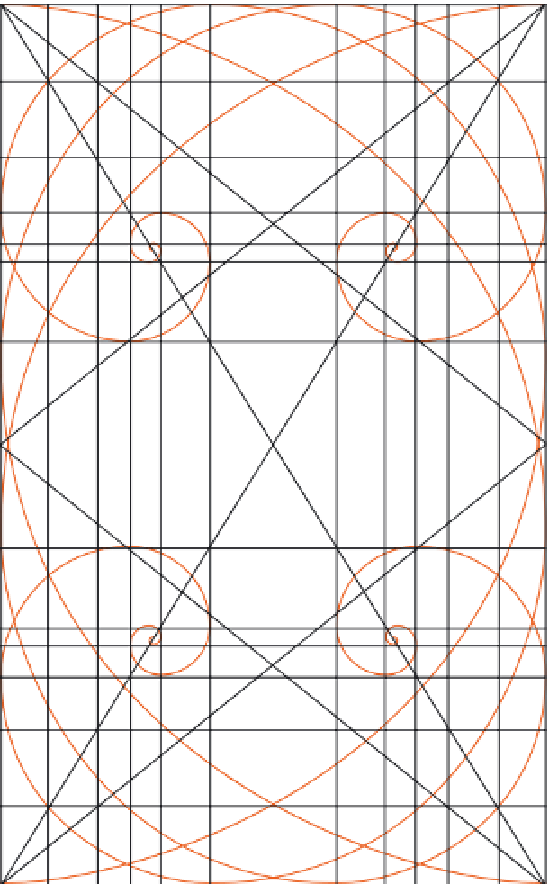Graphics Reference
In-Depth Information
TYPOGRAPHIC DESIGN PROCESS: CASE STUDY
Composites
Designer David W. Steadman devised an experiment that yielded
visual compositions via a process that deliberately creates
unpredictable results. Similar to a collage, these compositions are
multiple layers of image and typographic elements merged to form
a composite whose purpose is to explore the convergence and
alignment of graphic elements manipulated to adhere to the same
geometric guidelines. His composites allowed him to observe a
combination of visual references that symbiotically created a hybrid,
or multifaceted, message.
Steadman randomly chose topics that are rich in visual resources.
Common themes in his work include diagrammatic patterns, language
transmissions, iconography, and geographic references.
Contraints
Creation of the composites mirrored a traditional design process, but
with the addition of rules and constraints that forced Steadman to
work with unpredictable outcomes. Realized entirely on computer,
the final digital composites are informed by a wide range of subjects.
Through the design process, he explored the intersection of geometry,
subject matter, and time.
Geometry.
A geometric grid of fixed size based on the golden
rectangle, which has side-length proportions (approximately 1:1.618)
derived from the Fibonacci sequence, provide the basis for Steadman's
composites (Fig.
12-60
).
Subject matter.
Steadman chose a specific subject matter for
each composite. Examples of concepts he explored are social media,
astronomy, sonar, airports, Navaho Yei, and Beauchene disarticulation,
an “exploded” visualization used by anatomist Claude Beauchene to
illustrate the structure of the human skull.
Time.
Each composite was created during a five-day span.
12-60
Grid used for each composite.

